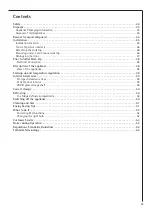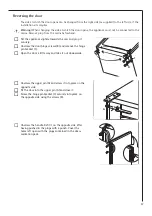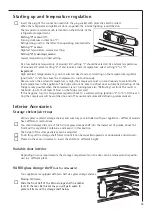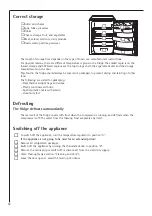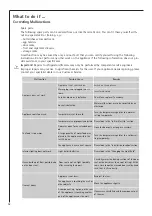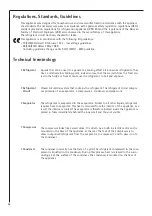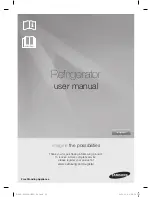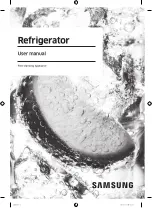
51
Energy Saving Tips
• Do not install the appliance near cookers, radiators or other sources of warmth. High ambient tempera-
tures cause longer, more frequent operation of the compressor.
• Ensure sufficient air circulation and exhaust at the appliance base and at the back wall of the applian-
ce. Never cover air vent openings.
• Do not place warm foods into the appliance. Allow warm foods to cool first.
• Only leave door open as long as necessary.
• Do not set temperature any colder than necessary.
• Always keep the heat emitting condenser, the metal grille on the rear wall of your appliance clean.
Cleaning and Care
For hygienic reasons the appliance interior, including interior accessories, should be cleaned regularly.
Warning!
• The appliance may not be connected to the mains during cleaning. Danger of electrical shock! Before
cleaning switch the appliance off and remove the plug from the mains, or switch off or turn out the
circuit breaker or fuse.
• Never clean the appliance with a steam cleaner. Moisture could accumulate in electrical components,
danger of electrical shock! Hot vapours can lead to the damage of plastic parts.
• The appliance must be dry before it is placed back into service.
Important!
• Ethereal oils and organic solvents can attack plastic parts, e.g.
– lemon juice or the juice from orange peel;
– butyric acid;
– cleansers which contain acetic acid.
Do not allow such substances to come into contact with appliance parts.
• Do not use any abrasive cleansers.
Remove the food from the refrigerator. Store it in a cool place, well covered.
Switch the appliance off and remove the plug from the mains, or switch off or turn out the circuit
breaker or fuse.
Clean the appliance and the interior accessories with a cloth and lukewarm water. Commercially available
dish washing detergents may also be used.
After cleaning wipe with fresh water and rub dry.
Accumulation of dust at the condenser increases energy consumption. For this reason carefully clean the
condenser at the back of the appliance once a year with a soft brush or a vacuum cleaner.
Check the water drain hole on the rear wall of the fridge.
Clear a blocked drain hole with the aid of the green peg in the
pack of accessories included with the appliance.
After everything is dry place appliance back into service.
☞
☞
☞
☞
☞
☞



